Culet? Semi-bezel? Cabochon? Bur? Sometimes it feels like jewelry designers are speaking a foreign language when it comes to setting stones. Like every industry, we have our technical jargon and niche knowledge, but it doesn’t have to be so mysterious. I’m breaking down what jewelry designers talk about when we talk about stone settings.
Having a better understanding of all of this terminology will make it much easier for you to communicate with a jewelry designer about what you’re looking for and your vision for your perfect piece!
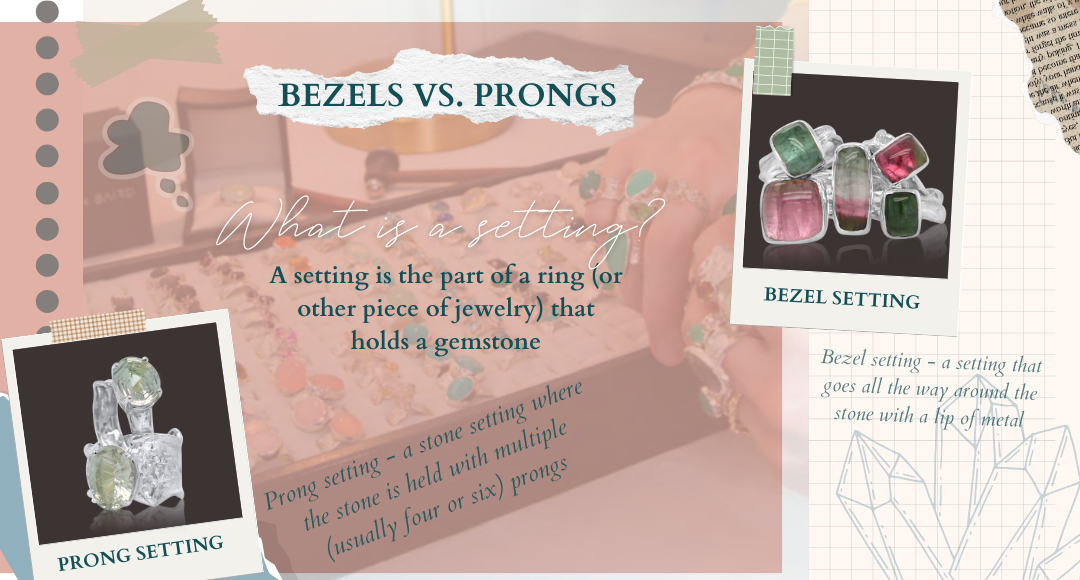
Wait, what’s a setting again?
So glad you asked. A setting is the part of a ring (or other piece of jewelry) that holds your gemstone. There are two basic types of settings: bezels and prongs. Bezel settings go all the way around a gemstone with a lip or rim of metal locking the stone in and concealing everything but the top. Prong settings have, well, prongs that grab onto the gem and hold it in place. Prong settings allow you to see the geometry of the gemstone from multiple angles.
Prong Settings and Faceted Stones
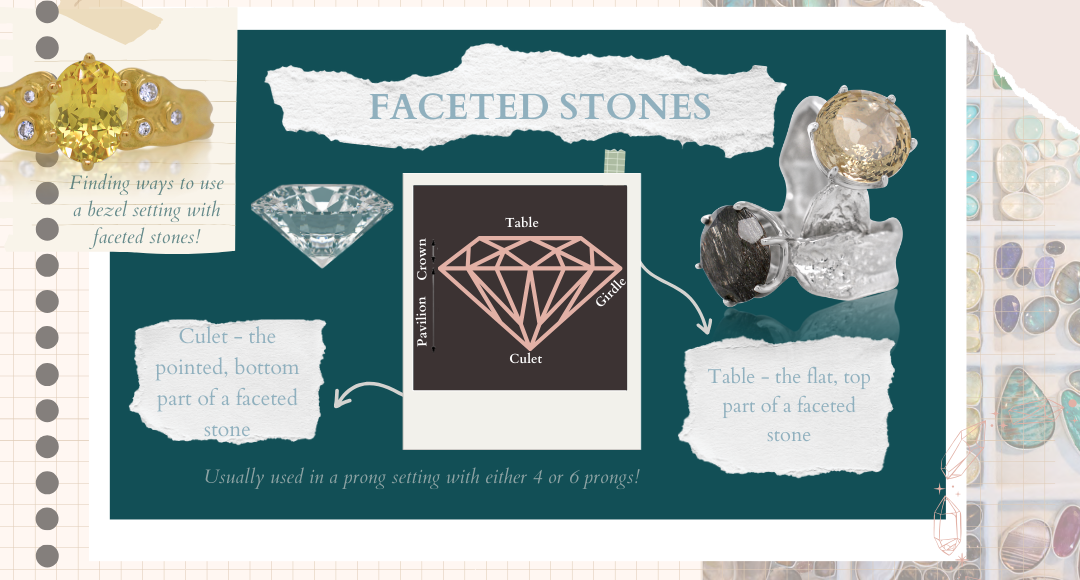
Prong settings are most commonly used with faceted stones, which are pointed at the bottom with many flat sides (or facets) at the top. The top of a faceted stone, the side with the many cuts, is called the table. The pointed part of the stone, at the bottom, is called the culet.
Prong settings are the go-to for fine jewelry and statement pieces like engagement rings, where the gemstone is the showpiece. Most rings will have either four or six prongs, which is simply an aesthetic choice. I use both versions in my jewelry. Lately, I’ve been very drawn to six-prong designs, because of how regal and elegant they look. They almost remind me of a flower in bloom, with the gemstone as the center and the prongs as the petals.
Bezel Settings and Cabochon Stones
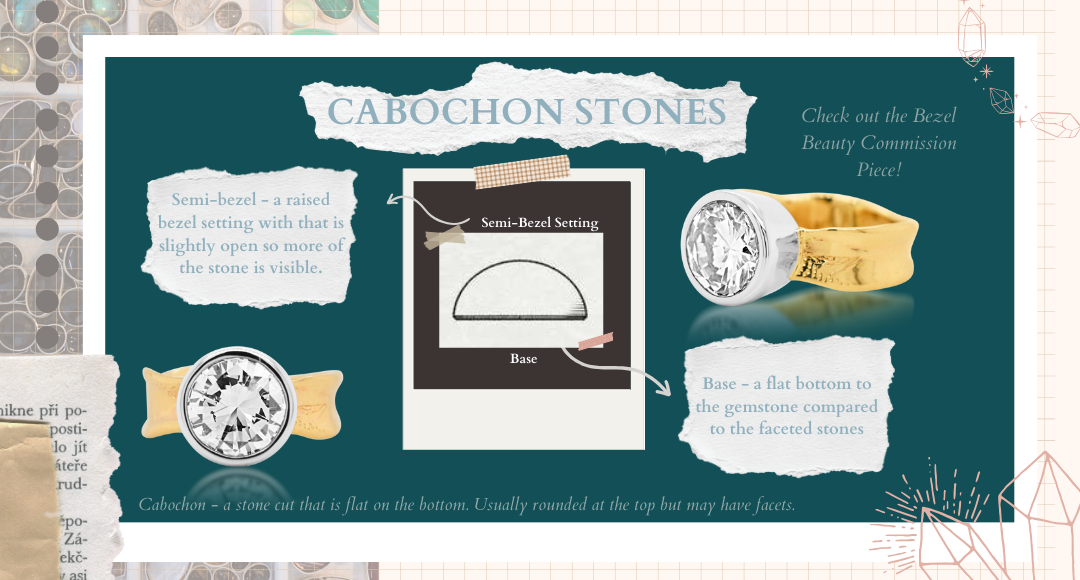
Bezel settings are most commonly used for cabochon stones, which are flat on the bottom and usually rounded at the top. When I’m working with organic or irregularly shaped stones, I always use a fine silver bezel setting. Fine silver is the softest metal to gently push and form around the stone, no matter what the shape is. It’s truly just like butter! This is why I use fine silver bezels on all my KBCE rings. (In case you haven’t heard, The Kristen Baird® Collaborative Experience allows you to create your very own one-of-a-kind bezel ring, with just a few clicks!)
Bezel settings can also be used for faceted stones like I did with the Bezel Beauty commission. I’ve invented my own modified bezel setting for all the tiny diamonds in my fine rings! I start with a tiny metal granule, then drill a small opening to set the petite diamond. The main rule when setting faceted stones in a bezel is that the culet cannot go lower than the band. (Look at you understanding that sentence!)
Finally, there are also semi-bezel settings that are raised and partially open, so you can see a bit more of the stone, but not as much as you would with a prong.
Burs, Pneumatics, and Vectors: The Stone Setting Toolkit
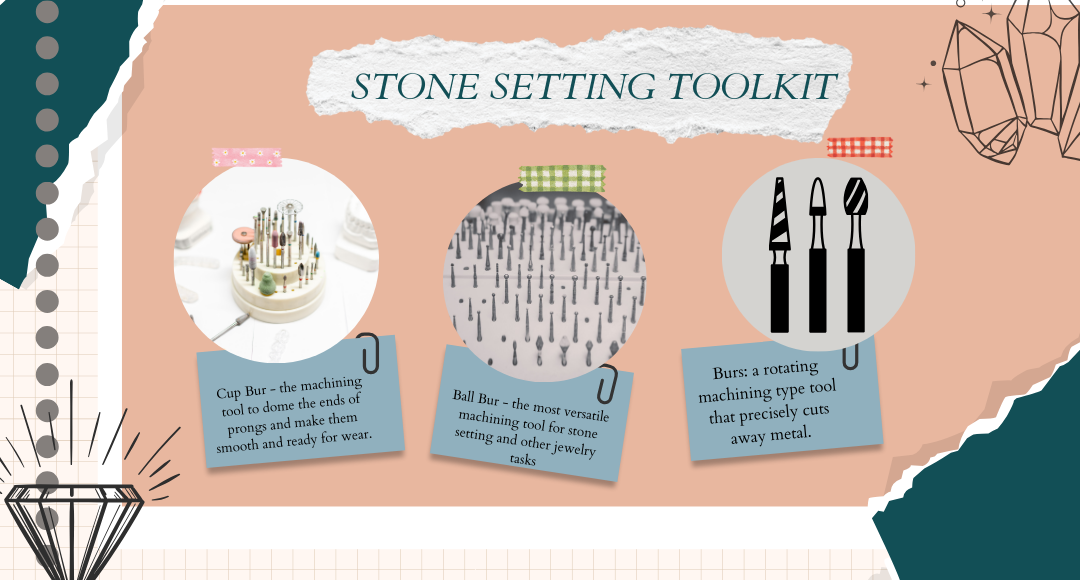
When a jeweler installs a prong setting in a piece, the prongs are straight and stiff. The jeweler uses a series of machining tools to remove metal from the setting and cut out the shape of the stone, creating a seat to place the stone in. Most of these are types of Burs, small rotating metal tools that cut away metal. (If you picture the tools a dentist uses, with all those little bits to shape and that rotary tool they fit into, you’ll have a good idea of what these look like.)
Ball Burs are round and used for the initial shaping of the prongs. Hart Burs are angled to match the shape of the “girdle” (the side point) of the stone itself. After the stone is placed, pliers are used to bend the prongs over the table and vector tighten the stone into place, a process of using side to side tension and pressure to seal the stone in. Finally, a cup bur is used to give the prongs a nice rounded look at the top, like a cute little dome.
My most important tool for setting a bezel setting is my GraverMax tool.This is a pneumatic hammer handpiece (powered by compressed air). I use the graver max to gently hammer the metal over the top of the stone, so it’s nice and flush. Finally, I burnish the metal to smooth it out right where the metal meets the stone. Ahhhh, that nice shiny seal
Wow! This is a ton of information. Just in case you need a refresher, I’m including a handy vocab list below. But don’t worry… there won’t be a quiz. ;-) Use this list for your next visit with a jewelry designer, and you’re sure to wow her with your knowledge!
Stone Setting Vocabulary
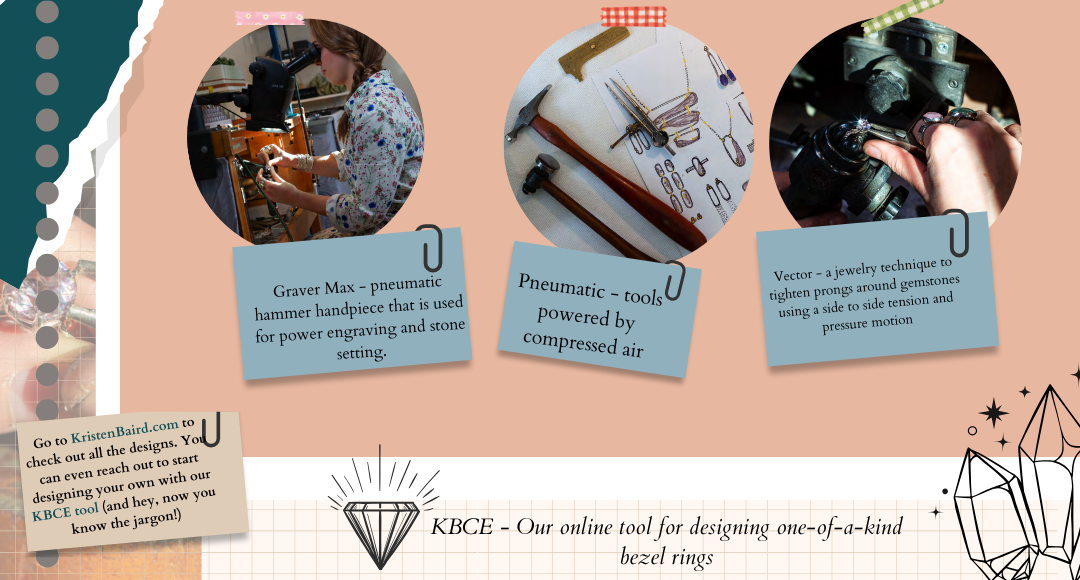
Ball Bur - the most versatile machining tool for stone setting and other jewelry tasks
Bezel Setting - a setting that goes all the way around the stone
Bur - a rotating machining type tool that precisely cuts away metal.
Cabochon - a stone cut that is flat on the bottom. Usually rounded at the top but may have facets.
Culet - the pointed, bottom part of a faceted stone
Cup Bur - the machining tool to dome the ends of prongs and make them smooth and ready for wear.
Facet - the many flat surfaces of a gemstone. Faceted stones are pointed at the bottom with many flat angles.
Graver Max - pneumatic hammer handpiece that is used for power engraving and stone setting.
KBCE - Our online tool for designing one-of-a-kind bezel rings
Pneumatic - tools powered by compressed air
Prong Setting - a ring setting where the stone is held with four or six prongs
Semi-bezel - a raised bezel setting with that is slightly open so more of the stone is visible.
Setting - the part of the ring that holds the gemstone
Table - the flat, top part of a faceted stone
Vector - a jewelry technique to tighten prongs around gemstones using a side to side tension and pressure motion. (If you want to check it out - here’s a 2 minute video. Kinda neat!)

